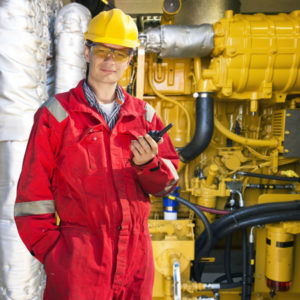Hydraulics systems are important for many operations, from agriculture to construction and industrial plants. Unfortunately, they can also pose serious and even life-threatening hazards if proper care is not taken. This is especially important when repairing hoses, as this requires workers to be in close proximity to the equipment.

At Hoseright, we’re concerned for the safety of all workers. That’s why we’ve put together this article to help you learn about the potential hazards of hydraulic systems and how to repair and maintain them. If you still feel unsure about working on the hydraulics yourself, you can call our friendly team about our hydraulic hose repair services.
Hydraulic Hazards
Hydraulic systems and hydraulic fluid can present serious hazards in a number of scenarios:
1.Pinhole Leaks
Hydraulic fluid is highly pressurised and the compressed liquid can jet out through tiny leaks, penetrating a worker’s skin or eyes. These are called ‘injection injuries’. They can cause severe injuries ranging from gangrene to blindness. Injection injuries require immediate medical attention and can often result in amputation of the affected limb.
2. Injuries from Hot Fluid
The pressurised fluid in a hydraulic system can also be very hot. If a worker is exposed to hydraulic fluid while removing or adjusting components, or if a hose bursts, they may sustain burns, bruises, cuts, and abrasions.
3.Hose Problems
When an unrestrained hose fails while under pressure it flails around until the hydraulic pressure is exhausted. A whipping hose increases the likelihood of contact with the hot hydraulic fluid. The hose itself can also cause striking injuries. These include concussions, lacerations, and broken bones.
Staying Safe around Hydraulics
Proper maintenance is critical for making sure your hydraulics assembly remains functional and safe. Here are some safety measures to keep you protected when checking, maintaining, and repairing hydraulic hoses.
- Regularly examine the hydraulic lines for leaks and wear.
- When looking for leaks, never run your hand along a hydraulic line –this puts you at risk of injection injuries. Instead, use a piece of cardboard or plexiglass to locate leaks.
- Always wear personal protective equipment (PPE) when performing maintenance on hydraulic systems, including gloves and eye protection.
- Do not rely solely on the hydraulic lift if you work on hydraulic components with the system raised. Set the working unit on blocks as a precautionary measure.
- Unless you are bleeding the hydraulic system, do not run the machine engine when you are servicing it.
- Let the hydraulic system cool before changing lines, connections, filters, or fittings.
- Coat the cylinder rods with a lubricant that provides rust protection.
- Periodically replace filters, and keep hydraulic oil away from contaminants – dirt is the biggest culprit in hydraulic system damage.
- Before removing the cylinders from working units, make sure that the units are resting on the ground, safety stands, or safety blocks and that the engine is shut off.
- Use a chain hoist, floor jack, or another type of assistive device if you need to remove heavy hydraulic pumps or control valves. Many workplace injuries result from people simply trying to lift or move things that are far too heavy for manual labour.
For further assistance with your hydraulic system maintenance, contact the team at Hoseright. We are Perth and Regional WA’s experts in hydraulic hose fittings.
Content Source
Content Source
